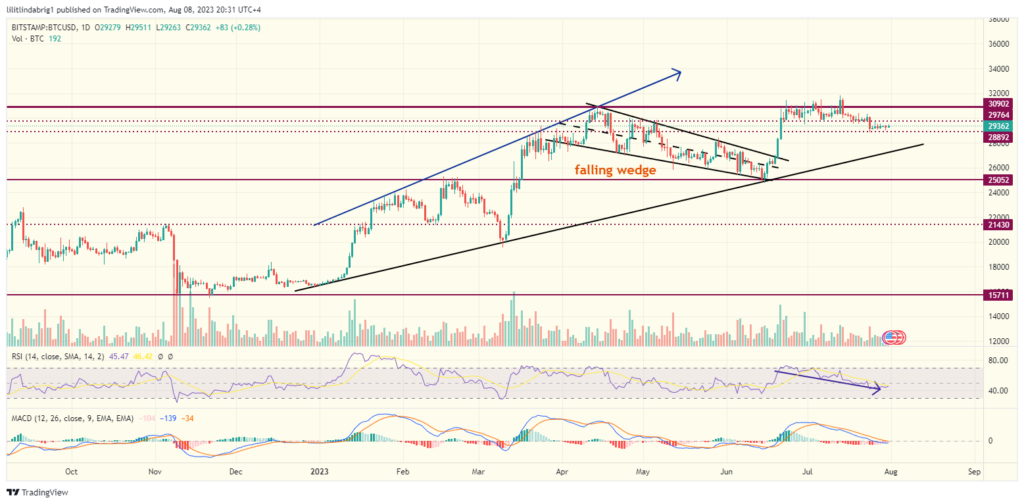Key Takeaways:
- The US economy is facing a liquidity crunch after the debt ceiling extension.
- Treasury yields climb on the back of increased bond sales.
- The crypto market faces a sour H2 despite decoupling from stocks.

YEREVAN (CoinChapter.com) — The US government pulled off a narrow escape from default in May 2023, but the market consequences remain relevant. By ramping up debt issuance, the economy faces a selloff in Treasuries as the Treasury yields spike, threatening a recession.
US Treasury boosts quarterly bond sales.
In detail, The US Treasury boosted the size of its quarterly bond sales for the first time in over two years to help finance an alarming surge in budget deficits caused by Fed’s mounting hawkish policies against inflation.
As a result, Fitch Ratings, one of the three nationally recognized statistical rating organizations designated by the US Securities and Exchange Commission (SEC), started August off by lowering the US rating from its AAA status, i.e., the highest rating that an agency gives to a country concerning its ability to repay its debts.
The quarterly refunding statement from the Treasury claimed the latter would sell $103 billion of longer-term securities week starting Aug 7, exceeding market expectations. The Treasury also plans bigger sales of debt across the maturity spectrum.
Treasury yields spike in response.
The announcement contributed to a selloff in Treasuries that sent 10-year yields to the highest levels since November. In short, Treasury yields are investors’ annual returns for buying government bonds.
Typically, climbing Treasury yields indicate that borrowing is becoming more expensive. Thus, they proxy for longer-term interest rates and signal recession.

Notably, several experts predicted the liquidity crunch and warned investors to hedge against the possible aftermath of the debt ceiling increase.
For example, Ari Bergmann, the founder, and CTO of Penso Advisers, asserted that the government would need to restock its dwindling cash buffer to maintain its ability to pay the mounting debt and would flood the market with Treasury bill sales.
Moreover, the supply burst, estimated at approximately $1 trillion by the end of Q3, could quickly drain liquidity from the banking sector. Also, it could raise short-term funding rates and increase the probability of recession.
My bigger concern is that when the debt limit gets resolved — and I think it will — you are going to have a very, very deep and sudden drain of liquidity. This is not something that’s very obvious, but it’s something that’s very real.
said the CTO.
Bergman also asserted that such a drop could negatively affect risk markets. However, crypto investors are unlikely to benefit from the crisis.
Bitcoin (BTC) price unable to break above $30K
True, the crypto market has decoupled from stocks in 2023.
The statistics indicate that the correlation is at a three-year low. However, it might be too soon to talk about a bullish continuation for Bitcoin (BTC) and the gang, as a liquidity crunch could hurt both stocks and crypto assets alike, despite the low correlation.

Technicals aren’t on Bitcoin’s side, either. The alpha crypto remains range-bound, unable to break the price above the $30,000 ceiling effectively. As a result, BTC changed hands at barely $29,400. Additionally, given the lowering trading volumes, the digital asset will not likely break the noted resistance soon.


